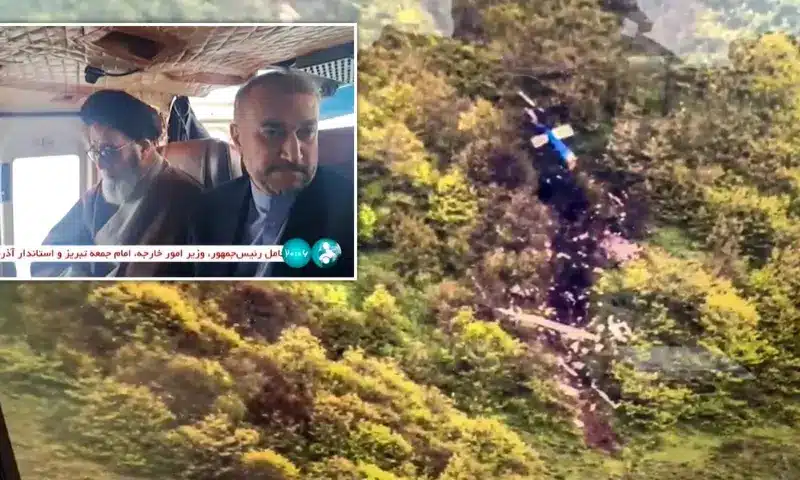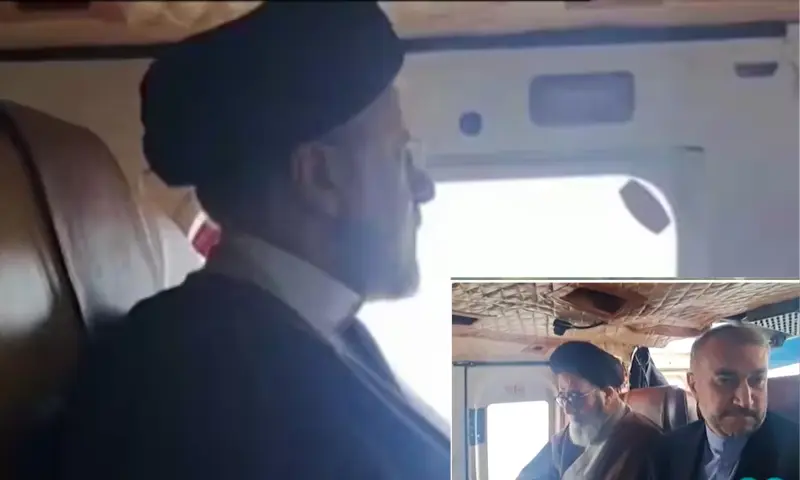In a shocking and tragic turn of events, Iran’s President Ebrahim Raisi and Foreign Minister Hossein Amir-Abdollahian perished in a helicopter crash on May 19, 2024. The incident, which occurred in the mountainous regions of northern Iran, has sent ripples of grief and uncertainty across the nation and beyond. As Iran grapples with the devastating loss of its top leaders, the implications for both domestic politics and international relations are profound.
The Incident: Iran President & Foreign Minister Die in Helicopter Crash
The helicopter carrying President Raisi, Foreign Minister Amir-Abdollahian, and several senior officials was en route to an official engagement in the northern province of Mazandaran. According to initial reports, the helicopter encountered severe weather conditions, leading to a catastrophic mechanical failure. Despite the pilot’s efforts to navigate through the turbulence, the helicopter crashed into a remote mountainous area, instantly killing all aboard.

Eyewitnesses in nearby villages reported seeing the helicopter struggling in the sky before it plummeted. Rescue teams faced significant challenges due to the rugged terrain and adverse weather, but they eventually reached the crash site, confirming the tragic loss of Iran’s highest-ranking officials.
Immediate Aftermath
As news of the crash broke, Iranians flooded the streets in an outpouring of grief and solidarity. Spontaneous vigils and mourning ceremonies were held nationwide, reflecting the profound sense of loss felt by the populace. President Ebrahim Raisi, a key figure in Iran’s conservative faction, and Foreign Minister Hossein Amir-Abdollahian were instrumental in shaping Iran’s domestic and foreign policies. Their deaths leave a significant void in the country’s leadership at a critical juncture.
A Nation in Mourning

Iran has declared a week of national mourning in honor of President Raisi and Foreign Minister Amir-Abdollahian. Thousands have taken to the streets, holding vigils and praying for the deceased leaders. The Supreme Leader, Ayatollah Ali Khamenei, expressed profound sorrow and called for unity during this challenging time. In his address to the nation, Khamenei stated, “The loss of these esteemed leaders is a tremendous blow to our country. We must stand together, stronger than ever, to overcome this tragedy.”
Ebrahim Raisi: A Controversial Figure
Ebrahim Raisi, who assumed office in August 2021, was known for his hardline stance on various issues, including his unwavering opposition to Western influence and his advocacy for economic independence. His tenure was marked by a mix of internal reforms and stringent measures against dissent, which earned him both staunch supporters and fierce critics. Raisi’s vision for Iran was one of self-reliance and resistance against external pressures, particularly from the United States and its allies.
The Role of Hossein Amir-Abdollahian
Foreign Minister Hossein Amir-Abdollahian was a seasoned diplomat, recognized for his extensive experience in Middle Eastern affairs. He played a pivotal role in navigating Iran’s complex relationships with neighboring countries and global powers. His death not only complicates Iran’s diplomatic efforts but also disrupts ongoing negotiations, including the delicate discussions surrounding the 2015 nuclear deal, which Raisi’s administration had been navigating with cautious optimism.
Mideast Tensions on the Rise
This tragic event occurs against a backdrop of escalating tensions in the Middle East. Iran’s relationships with Israel, Saudi Arabia, and the United States have been particularly strained, with recent incidents further inflaming the situation. The death of Iran’s top leaders could potentially destabilize the region even further, as various factions within and outside Iran may seek to exploit this power vacuum.
The Immediate Political Fallout
The deaths of Raisi and Amir-Abdollahian leave a significant power vacuum in Iran. President Raisi, known for his hardline stance and close alignment with the Supreme Leader, was a pivotal figure in shaping Iran’s domestic and foreign policies. His unexpected demise triggers an immediate need for succession planning and raises questions about the future direction of the Iranian government.
The Iranian Constitution mandates that the First Vice President temporarily assume the presidency until new elections can be held. Mohammad Mokhber, the current First Vice President, has stepped in as acting president. However, the transition is far from straightforward. Mokhber, while competent, lacks the widespread support and influence that Raisi commanded.
Potential Power Struggle
The sudden leadership vacuum could lead to a high-stakes power struggle among Iran’s political factions. Hardliners, reformists, and moderates will likely jostle for influence in the coming weeks. The Supreme Leader will play a crucial role in guiding this transition, but the internal dynamics of Iran’s political elite are notoriously complex.
The Islamic Revolutionary Guard Corps (IRGC), a powerful military and political force in Iran, is expected to assert significant influence during this period. The IRGC’s stance and actions will be pivotal in determining the country’s immediate political trajectory.
International Implications
The loss of Raisi and Amir-Abdollahian comes at a time of heightened tensions in the Middle East. Iran’s adversaries and allies alike are closely monitoring the situation. The United States, Israel, and Saudi Arabia, in particular, are wary of the potential for increased instability in the region.
Iran’s foreign policy under Raisi was marked by a combination of defiance and strategic diplomacy. Amir-Abdollahian played a key role in negotiating with Western powers and managing Iran’s complex relationships with neighboring countries. Their deaths could disrupt ongoing diplomatic efforts, including the delicate negotiations over Iran’s nuclear program.
Economic Concerns
Iran’s economy, already under strain due to international sanctions and domestic challenges, faces further uncertainty. President Raisi had initiated several economic reforms aimed at stabilizing the economy and addressing inflation. The sudden leadership change may delay or derail these efforts, exacerbating economic woes and increasing public dissatisfaction.
What’s Next for Iran?
In the coming days and weeks, Iran will need to navigate a series of critical decisions. The appointment of a new president, the realignment of political factions, and the continuation of key domestic and international policies will all be crucial in determining the country’s future.
- Succession Planning: The immediate focus will be on the smooth transition of power to an interim president and the organization of new elections. Ensuring a transparent and legitimate process will be vital to maintaining public confidence and political stability.
- Political Unity: Calls for unity from the Supreme Leader and other influential figures will be essential in preventing a fractious power struggle. The ability of Iran’s political elite to come together in this time of crisis will significantly impact the country’s stability.
- International Diplomacy: Iran’s foreign policy apparatus will need to swiftly adapt to the new leadership. Diplomatic channels with key countries, including ongoing nuclear negotiations, must be maintained to avoid escalating tensions.
- Economic Stability: The new leadership must prioritize economic stability and continue the reforms initiated by Raisi. Addressing inflation, unemployment, and sanctions will be critical to preventing further economic decline.
The Path Forward
As Iran mourns its leaders, the nation stands at a crossroads. The path forward is fraught with challenges but also opportunities for renewal and change. The Iranian people, known for their resilience, will play a crucial role in shaping the country’s future. Whether this tragic incident will lead to a period of introspection and reform or further entrenchment of existing policies remains to be seen.
In the coming days, weeks, and months, the world will be watching closely as Iran navigates this unprecedented crisis. The choices made by its interim leaders, the reactions of its people, and the responses of the international community will collectively determine the next chapter in Iran’s history.

The tragic deaths of President Ebrahim Raisi and Foreign Minister Hossein Amir-Abdollahian mark a pivotal moment in Iran’s history. As the nation mourns, it must also prepare for a period of significant political and economic transition. The path ahead is fraught with challenges, but with careful leadership and unity, Iran can navigate this crisis and emerge resilient. The international community will be watching closely, understanding that Iran’s next moves will have far-reaching implications for regional and global stability.
 Twitter
Twitter Facebook
Facebook